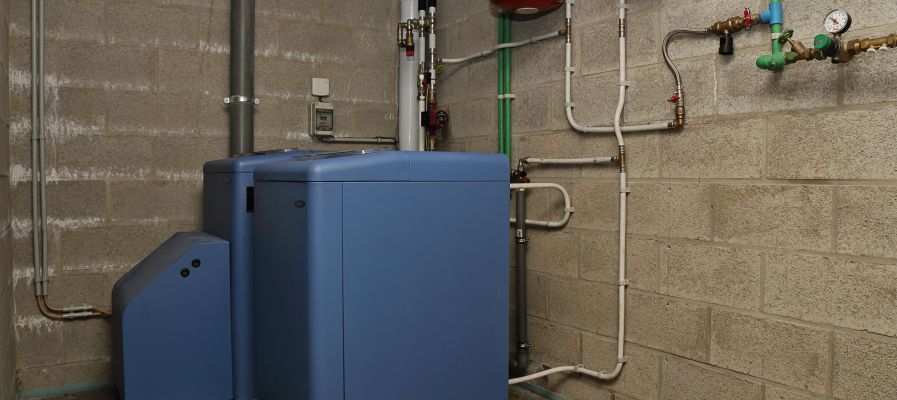One might wonder how an oil-fired boiler gives off heat in your home? Simply by burning the oil that feeds the heating system.
That some models can also produce hot water for your sanitary facilities (DHW) but it’s not compulsory, it’s up to you!
And did you know that a good adjustment of your boiler can increase its energy and ecological performance? Yes yes it can, because the combustion of fuel oil will be complete, which allows you to have optimal heating and reduces the risk of carbon monoxide emissions, an odourless and dangerous (very naughty!) gas for the occupants of the house.
The operation of the oil-fired boiler
Oil-fired heating
An oil-fired heating system consists of 3 main parts: a central heating system, a storage tank (of oil of course) and a boiler. The oil leaves the tank and goes to the boiler to be heated. This combustion increases the heat of the water present in the heating system in order to circulate it in all the heating appliances of the house (radiators).
The efficiency of an oil-fired boiler
The efficiency of an oil-fired boiler makes it possible to know the loss between the energy produced and the energy consumed. This corresponds to the ratio between the amount of fuel oil consumed and the heat obtained by the boiler during combustion.
Water production
Oil-fired boilers are often used in conjunction with sanitary facilities to provide hot water in addition to heating. There are several types of hot water production, we have kept the main ones for you:
- The production of hot water with accumulation is often associated with a hot water tank. This solution is advantageous for large families, because the water stored in the tank allows instantaneous use.
- Micro-accumulation hot water production works like accumulation production only the quantity of water in the tank is reduced and saves space.
- Instantaneous hot water production is advantageous for the occupants of a dwelling who do not necessarily need a large quantity of hot water.
Fuel oil storage
The fuel oil is stored in a huge tank away from cold, humidity and light. It is installed either in a pit, underground or above ground and is filled by a tanker truck.
The different types of oil-fired boilers
Oil-fired condensing boiler
In an oil-fired condensing boiler, an accumulator guarantees the production of hot water. The water thus heated (90°c) produces steam which returns directly to the main heating system without being discharged through a flue. This model remains one of the most expensive on the market, but has the best possible efficiency (on average 30% savings as opposed to older boilers). However, it is still the most cost-effective solution when large quantities of hot water are required.
Low-temperature oil-fired boiler
In contrast to the oil condensing boiler, the efficiency is on average 20% higher than older boiler models. The main difference is that the temperature for heating water is lower than the temperature to be reached for an oil condensing boiler model (40°C).
Combination boiler
A combination boiler is a boiler that can produce both heating and hot water for the sanitary facilities.
Suction oil boiler
Installed in a closed room, it works thanks to an air supply and flue gas evacuation system. This avoids a draught in the room and does not require the use of a chimney flue.
Advantages and Disadvantages
Its advantages
Ideal for large spaces
Total autonomy via supply everywhere in France
Improved safety (less risk of explosion, lower sulphur content, reduced CO2 emissions)
Good service life (on average more than 20 years)
Its disadvantages
Price (higher than a gas boiler)
Need space for fuel oil storage
Regular maintenance of the tank (emptying and degassing)
Fossil energy (dependent on the price of oil)
Rates
It is necessary to count – 2500 – 8000€ for the purchase of an oil-fired boiler.
This price variation depends on its use, the number of associated heating appliances and the quality of the insulation of the house.
Don’t forget the purchase of an oil storage tank 1000€ and calculate the average consumption of oil to buy.

Comments are closed